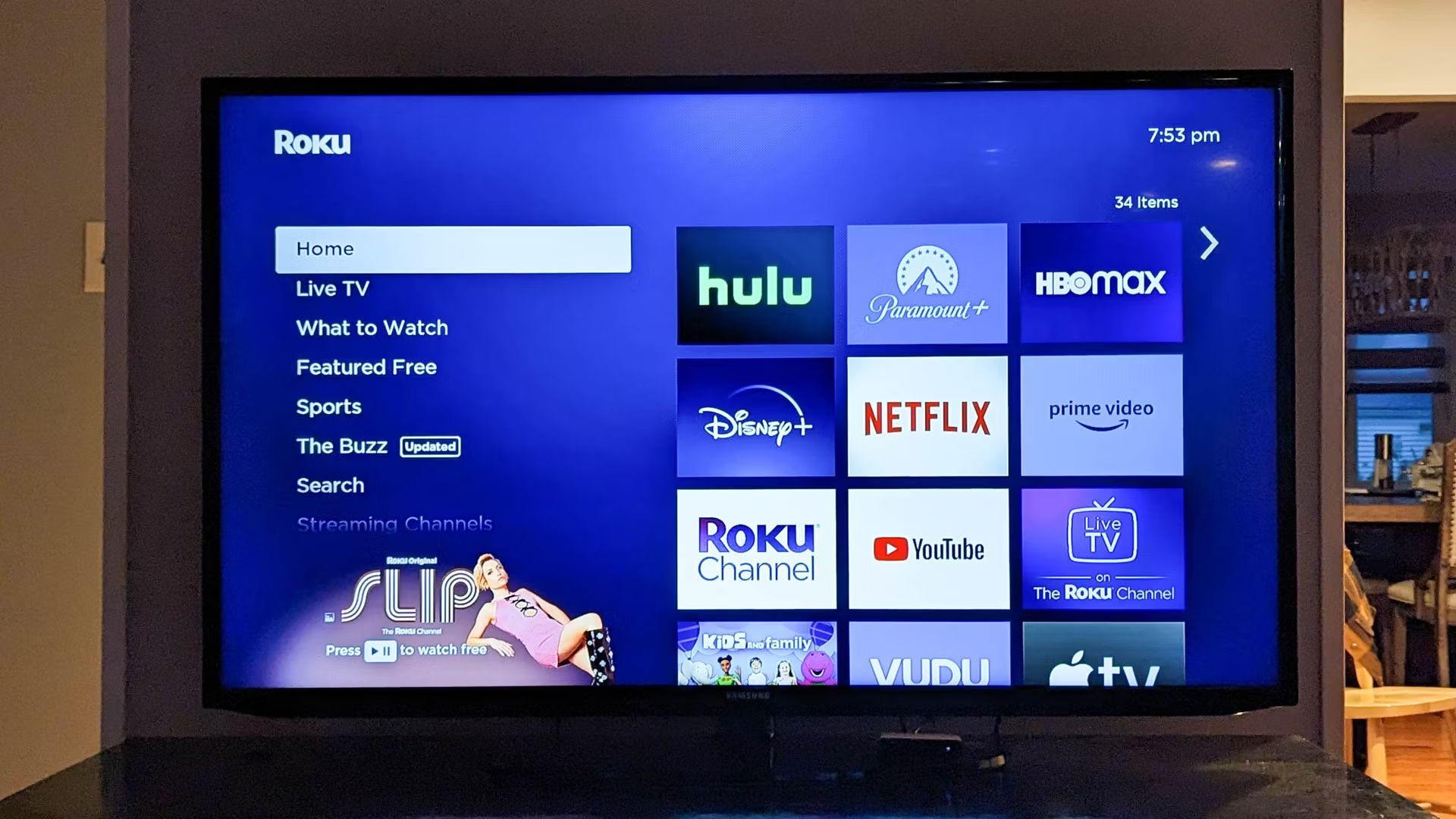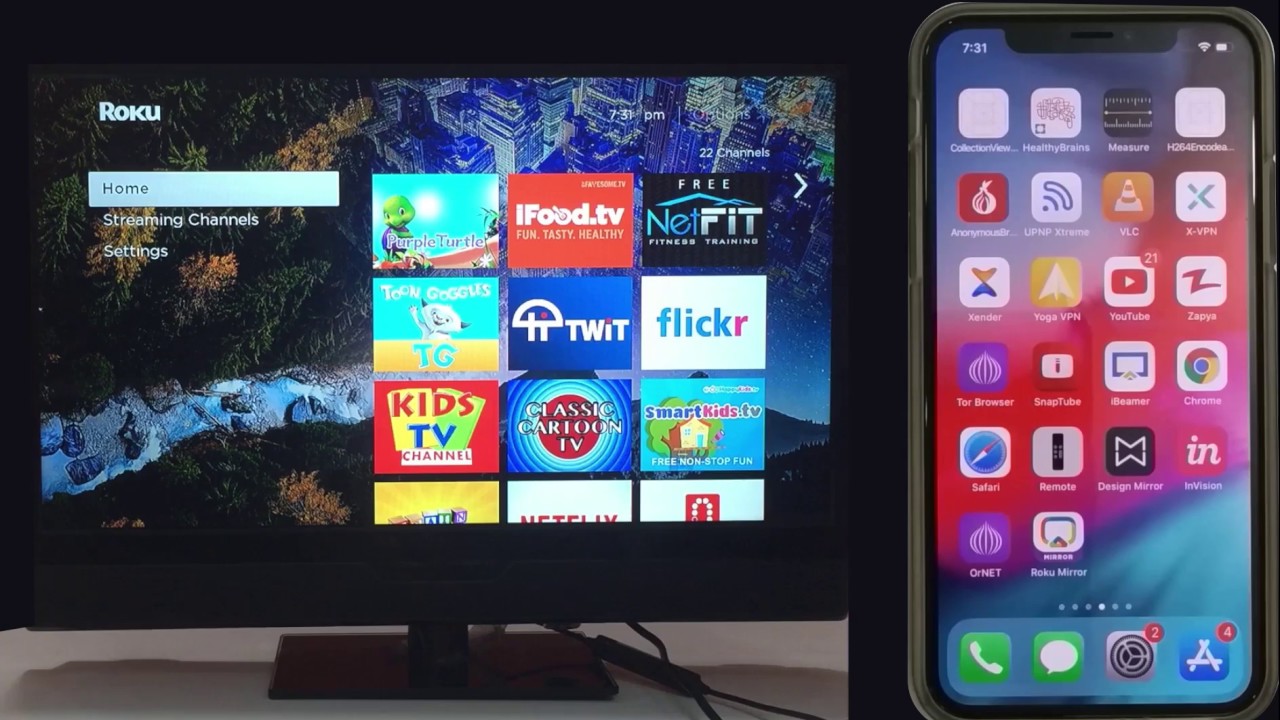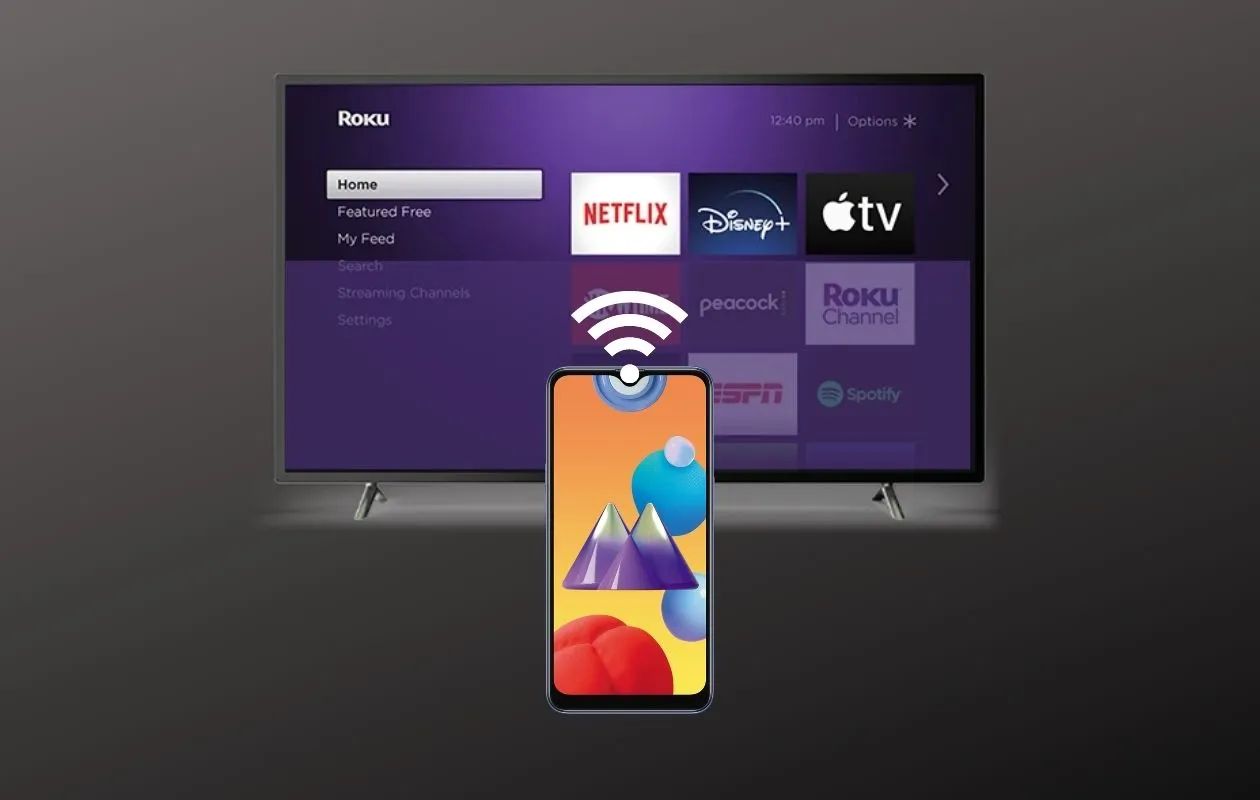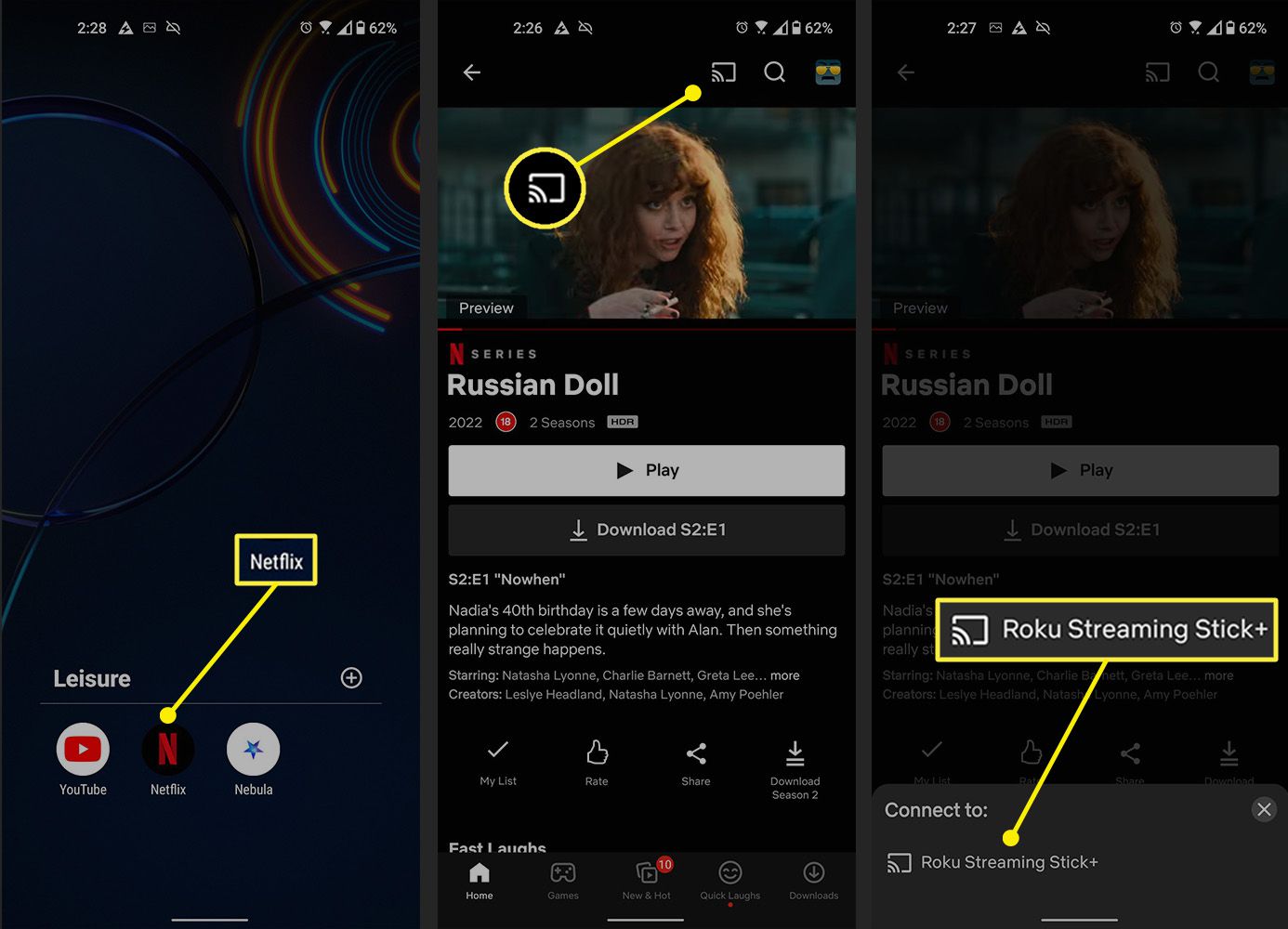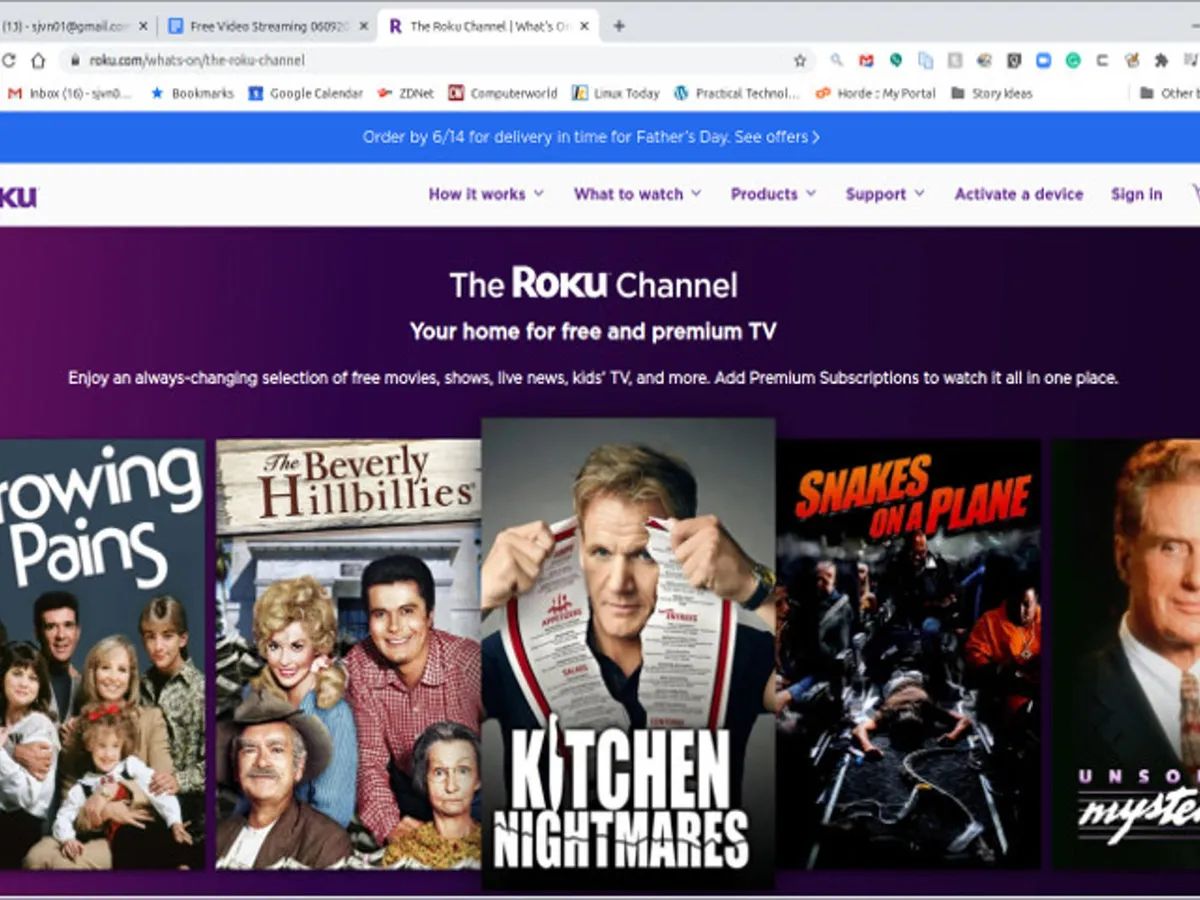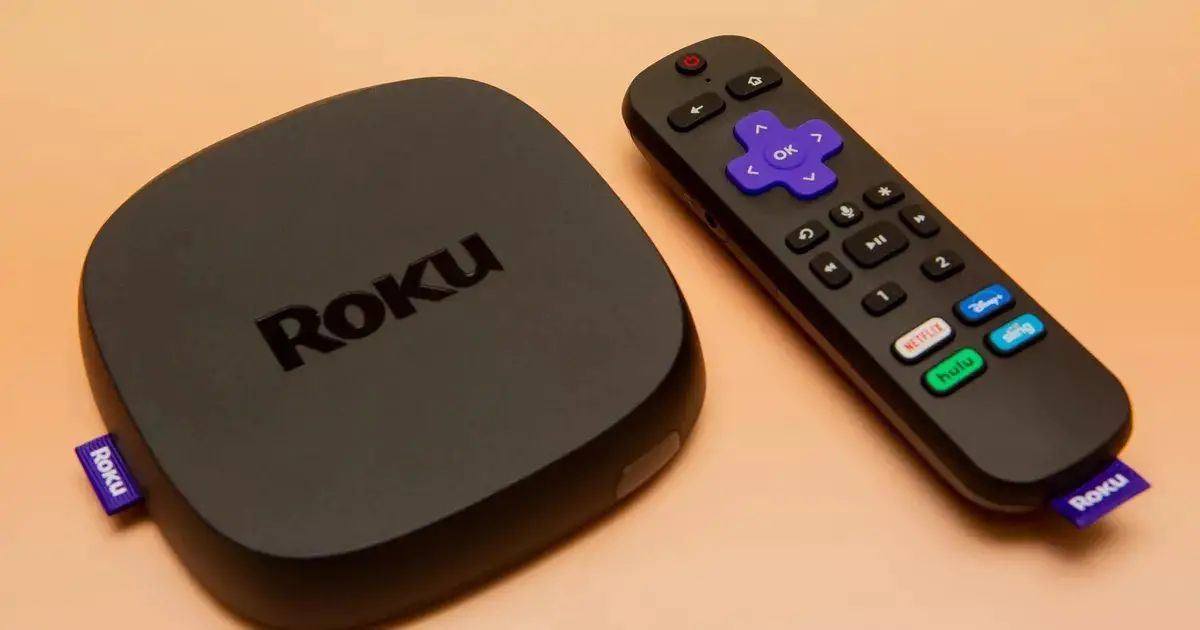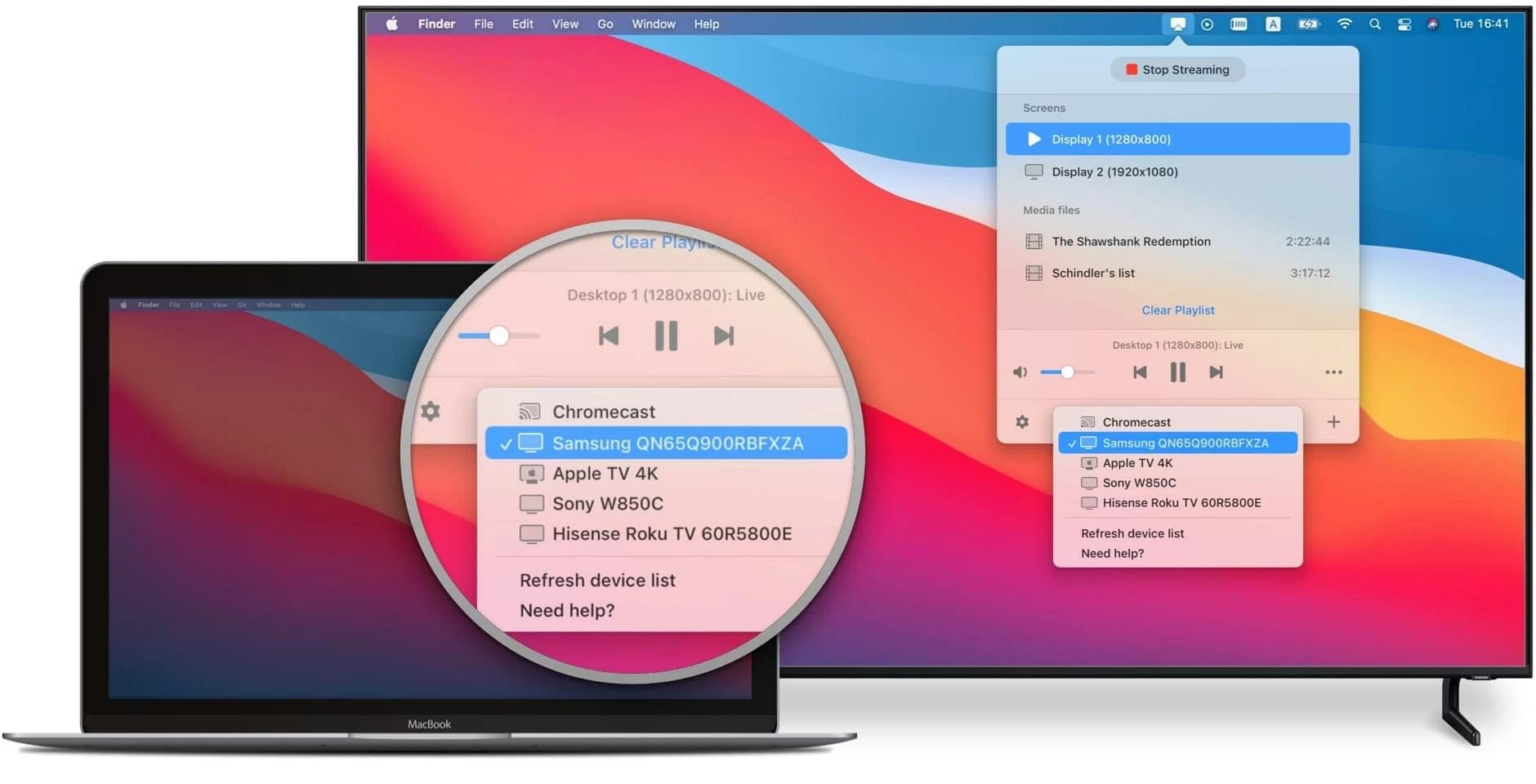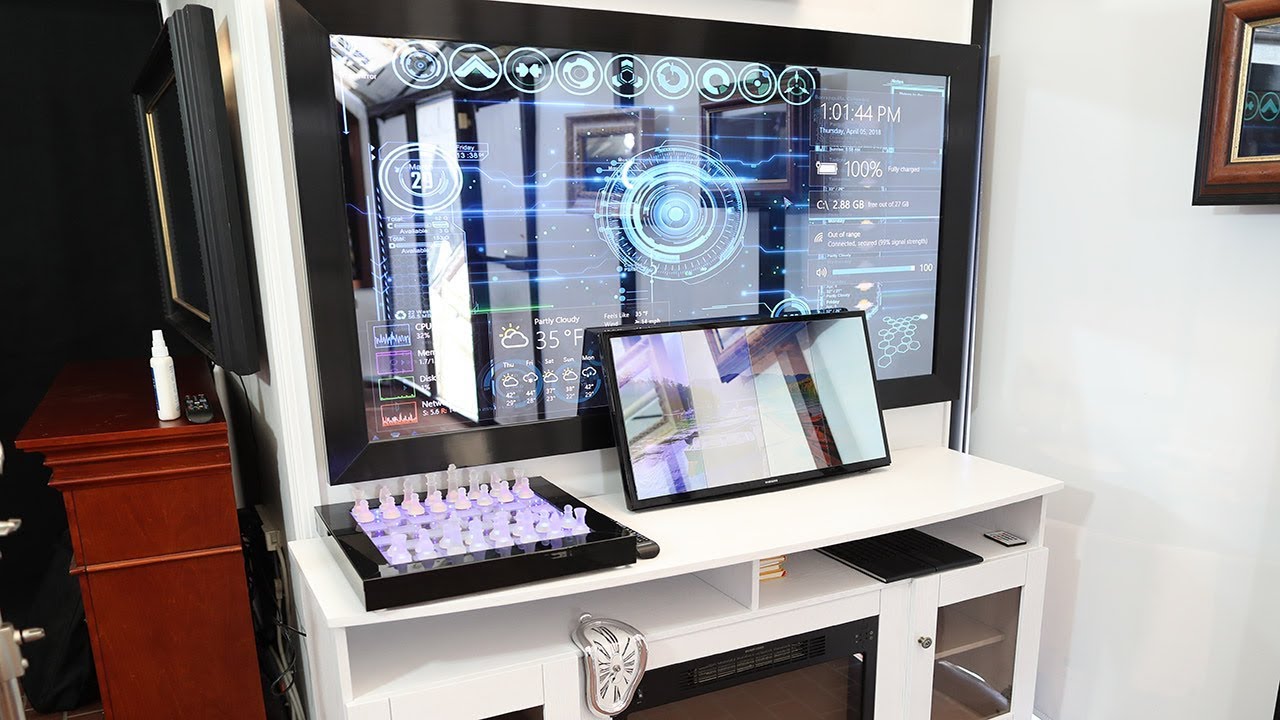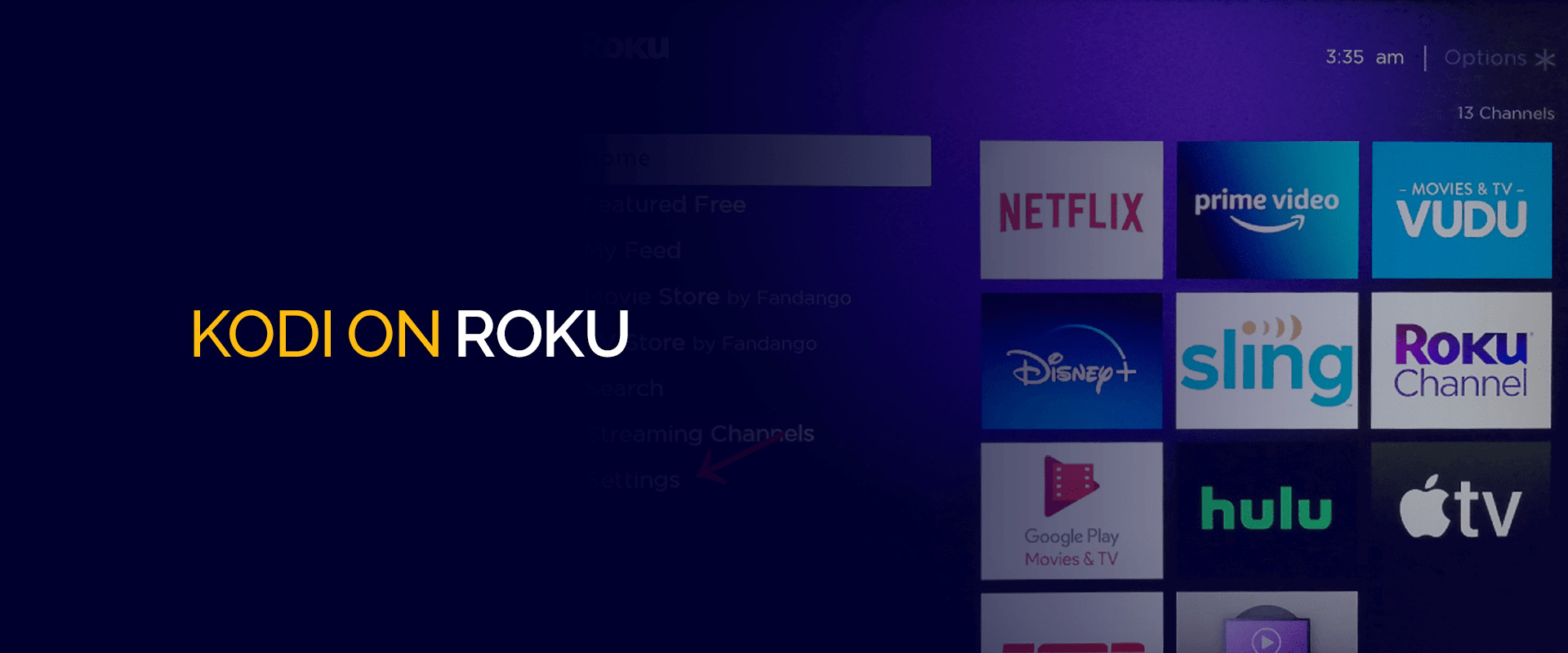Introduction
Screen mirroring has become increasingly popular as a way to conveniently share and enjoy content from our devices on a larger screen. Whether you want to stream videos, play games, or display presentations, screen mirroring provides a seamless way to project your device’s screen onto a TV.
One of the popular options for screen mirroring is Roku TV. Roku TV offers a user-friendly interface and supports a wide range of devices to cast from, including Android smartphones, iPhones, and iPads. In this article, we will guide you through the process of screen mirroring to Roku TV, helping you make the most of this feature.
Screen mirroring allows you to replicate the screen of your device onto a larger display, such as a TV. This means that whatever you see on your smartphone or tablet can be projected onto a Roku TV, giving you a more immersive and enjoyable experience.
There are numerous advantages to using screen mirroring on Roku TV. Firstly, it allows you to stream your favorite videos, movies, and TV shows from popular platforms like YouTube, Netflix, and Hulu directly on your TV. You can also play mobile games on a bigger screen, creating a more engaging gaming experience.
Additionally, screen mirroring is extremely useful for business presentations or educational purposes. By mirroring your device’s screen onto a Roku TV, you can easily showcase your slides, documents, and other visual aids to a larger audience without the need for additional cables or adapters.
Furthermore, screen mirroring on Roku TV offers the flexibility to navigate through apps and content using your device while simultaneously viewing it on the TV screen. This allows you to multitask seamlessly and control the content from the comfort of your device.
To enjoy the benefits of screen mirroring on Roku TV, there are a few requirements to take into account. Firstly, you need a Roku TV with screen mirroring capabilities. Most newer models of Roku TV support screen mirroring, but it’s always a good idea to check the specifications of your specific model.
Additionally, you will need a compatible device to cast from. Roku TV supports screen mirroring from Android smartphones, iPhones, and iPads. Your device should also have the screen mirroring or casting feature enabled, which can usually be found in the settings menu.
In the next sections, we will guide you through the setup process for screen mirroring on Roku TV, both for Android devices and for iPhone/iPad. We will also provide troubleshooting tips for any issues that may arise during the screen mirroring process.
What is screen mirroring?
Screen mirroring, also known as screen casting or screen sharing, is a technology that allows you to replicate the display of your device, such as a smartphone or tablet, on a larger screen, typically a TV. It essentially mirrors the content shown on your device’s screen onto the TV screen in real-time.
In more technical terms, screen mirroring uses wireless communication protocols, such as Wi-Fi or Bluetooth, to establish a connection between your device and the TV. Once connected, the TV acts as an extension of your device’s screen, displaying everything that you see on your device.
This technology has revolutionized the way we consume and share content. With screen mirroring, you can effortlessly watch videos, play games, browse photos, and even present documents on a much larger screen. It eliminates the need for physical cables or adapters, making it a convenient and hassle-free solution.
Screen mirroring is particularly useful in situations where you want to share something with a group of people. Whether you’re hosting a movie night with friends, giving a presentation, or simply want to enjoy your favorite content on a bigger screen, screen mirroring provides a seamless and immersive experience.
One of the key benefits of screen mirroring is its compatibility with various devices. Roku TV, in particular, supports screen mirroring from both Android devices and iPhone/iPad. This means that regardless of the device you own, you can easily connect it to your Roku TV and enjoy the wonders of screen mirroring.
It’s important to note that while screen mirroring allows you to share the visual content from your device, it does not transfer any audio data. To get the audio from your device to play through your TV’s speakers, you will need to connect your device to the TV using a separate audio connection, such as an HDMI cable or Bluetooth.
In summary, screen mirroring is a technology that enables you to display the contents of your smartphone or tablet onto a larger screen, such as a TV. It offers a convenient and wire-free way to enjoy your favorite content, share presentations, and play games. With Roku TV’s support for screen mirroring, you can easily connect your Android device or iPhone/iPad to enjoy the benefits of this feature.
Advantages of screen mirroring on Roku TV
Screen mirroring on Roku TV offers a multitude of advantages, making it a versatile and valuable feature for users. Here are some of the key benefits of using screen mirroring on Roku TV:
- Seamless Content Streaming: One of the major advantages of screen mirroring on Roku TV is the ability to stream content seamlessly. Whether you want to watch videos, movies, or TV shows from popular streaming platforms like Netflix or YouTube, screen mirroring allows you to mirror the content from your device directly onto the TV screen.
- Enhanced Gaming Experience: Gamers can rejoice as screen mirroring on Roku TV provides an enhanced gaming experience. By mirroring your device’s screen onto the TV, you can play mobile games on a larger display, resulting in better graphics and improved gameplay. Enjoy multiplayer games on the big screen and take gaming to a whole new level.
- Convenient Presentations: Screen mirroring on Roku TV is a valuable tool for business professionals and educators. Instead of relying on small screens or projectors, you can easily mirror your device’s screen onto a larger TV, making it effortless to deliver presentations, showcase slides, and teach effectively. It simplifies the process of sharing information with a larger audience.
- Flexibility and Control: Screen mirroring allows you to maintain control of your content while utilizing your device. You can navigate through apps, browse the internet, or interact with content using your smartphone or tablet, all while simultaneously mirroring your screen onto the TV. This flexibility allows for multitasking and provides a seamless user experience.
- Easy Content Sharing: With screen mirroring on Roku TV, sharing photos, videos, and other media becomes effortless. Instead of passing your device around to show pictures or videos, you can simply mirror your screen onto the TV and let everyone enjoy the content collectively. It’s a great way to share memories or entertain guests during social gatherings.
- Compatibility with Multiple Devices: Roku TV supports screen mirroring from a variety of devices. Whether you have an Android smartphone or an iPhone/iPad, you can easily connect it to your Roku TV and enjoy the benefits of screen mirroring. This versatility ensures that you can make the most out of the feature, regardless of the device you own.
These advantages make screen mirroring on Roku TV a popular choice for users who want a seamless and convenient way to enjoy their content, play games, deliver presentations, and share media. By utilizing the screen mirroring feature, users can enhance their entertainment and productivity experiences, all while utilizing the advanced capabilities of their Roku TV.
Requirements for screen mirroring to Roku TV
In order to successfully utilize screen mirroring on your Roku TV, there are a few requirements that need to be met. These requirements ensure compatibility and smooth operation between your device and the TV. Here are the key requirements:
- Roku TV: The first requirement is, of course, a Roku TV with screen mirroring capabilities. Most recent models of Roku TV support screen mirroring, but it’s always wise to double-check the specifications of your specific model to ensure compatibility.
- Compatible Device: You also need a compatible device that supports screen mirroring. Roku TV supports screen mirroring from Android smartphones, iPhones, and iPads. Your device should have built-in screen mirroring or casting feature, which you can typically find in the settings menu.
- Active Wi-Fi Connection: Both your Roku TV and the device you want to mirror from must be connected to the same Wi-Fi network. This network connection allows for seamless communication between the two devices, enabling screen mirroring to function properly.
- Latest Roku Software: To ensure optimal performance, make sure your Roku TV is running the latest software version. You can check for software updates in the Settings menu of your Roku TV. It’s recommended to keep your Roku TV up to date to take advantage of the latest features and improvements.
- Screen Mirroring/Casting Enabled: On your device, you need to enable screen mirroring or casting. The name of this feature might vary depending on the device and operating system. You can find this option in the settings menu of your Android device or the control center/settings menu on your iPhone or iPad. Make sure to enable it before attempting to connect to your Roku TV.
By meeting these requirements, you can ensure a smooth and successful screen mirroring experience on your Roku TV. It’s important to remember that the specific steps to enable screen mirroring and establish a connection may vary depending on the device and software version you are using. However, most devices follow a similar process, allowing for a hassle-free setup process.
Before diving into the setup process, it’s worthwhile to double-check that you meet all the requirements mentioned above. Once you have everything in place, you’re ready to proceed with connecting your Android device or iPhone/iPad to your Roku TV for an immersive screen mirroring experience.
Setting up screen mirroring on Roku TV
Setting up screen mirroring on your Roku TV is a straightforward process. Whether you have an Android device or an iPhone/iPad, the steps to enable screen mirroring are easy to follow. Here’s a general guide on how to set up screen mirroring on Roku TV:
- Ensure Compatibility: Confirm that your Roku TV and the device you want to mirror from meet the requirements mentioned earlier. Both devices should be connected to the same Wi-Fi network.
- Open Roku TV’s Settings: Using your Roku remote, navigate to the Home screen and select the gear icon to access Roku TV’s settings.
- Select System: In the Settings menu, scroll down and select “System.”
- Select Screen Mirroring: Within the System menu, choose “Screen mirroring” or “Screen mirroring mode” to access the screen mirroring settings.
- Set Screen Mirroring Mode: In the Screen Mirroring menu, you’ll typically find options like “Prompt,” “Always allow,” or “Never allow.” Choose the mode that suits your preference. The “Prompt” option will prompt you to confirm the connection every time you initiate screen mirroring, while “Always allow” attempts a direct connection without prompt.
- Enable Screen Mirroring on Your Device: On your Android device or iPhone/iPad, go to the settings menu and look for the screen mirroring or casting option. Enable screen mirroring or casting to allow your device to connect with Roku TV.
- Connect to Roku TV: Once you have enabled screen mirroring on your device, a list of available devices should appear. Select your Roku TV from the list to initiate the connection.
- Confirm Connection: On your Roku TV, you will receive a notification asking you to confirm the connection. Accept the connection request to establish a successful screen mirroring session.
- Enjoy Screen Mirroring: Once the connection is established, your device’s screen should be mirrored onto your Roku TV. You can now enjoy apps, videos, photos, games, and more on the big screen.
Keep in mind that the specific steps to enable screen mirroring may slightly vary depending on the model and software version of your Roku TV and device. However, the general process remains similar across devices.
Now that you have successfully set up screen mirroring on your Roku TV, you can enjoy the benefits of sharing your device’s screen on a larger display. Whether you want to stream videos, play games, or present content, screen mirroring provides a convenient and immersive experience.
Steps to connect Android devices to Roku TV
Connecting your Android device to your Roku TV for screen mirroring is a simple process. Follow these steps to establish a connection:
- Ensure Compatibility: Confirm that your Roku TV and Android device meet the requirements mentioned earlier. Both should be connected to the same Wi-Fi network.
- Open Roku TV’s Settings: Using your Roku remote, navigate to the Home screen and select the gear icon to access Roku TV’s settings.
- Select System: In the Settings menu, scroll down and select “System.”
- Select Screen Mirroring: Within the System menu, choose “Screen mirroring” or “Screen mirroring mode.”
- Enable Screen Mirroring: In the Screen Mirroring menu, select “Always allow” or “Prompt” to enable screen mirroring on your Roku TV.
- Open Settings on Your Android Device: On your Android device, open the Settings menu and look for the screen mirroring or casting option. The name may vary depending on your device’s manufacturer or Android version.
- Enable Screen Mirroring on Your Android Device: Once located, tap on the screen mirroring or casting option to enable it on your Android device.
- Choose Roku TV: After enabling screen mirroring on your Android device, a list of available devices should appear. Select your Roku TV from the list to initiate the connection.
- Confirm Connection: On your Roku TV, a notification will appear, asking you to confirm the connection. Accept the connection request to establish a successful screen mirroring session.
- Enjoy Screen Mirroring: Once the connection is established, your Android device’s screen will be mirrored onto your Roku TV. You can now navigate through apps, stream videos, play games, and more on the bigger screen of your Roku TV.
Remember, the specific steps and menu options may vary slightly depending on your Android device’s manufacturer, Android version, and Roku TV model. Adjustments might be needed based on these variables, but the general process remains the same across most Android devices and Roku TV models.
Now that you’ve successfully connected your Android device to your Roku TV, you can indulge in the immersive experience of screen mirroring, providing you with the convenience of enjoying your favorite content on a larger display.
Steps to connect iPhone/iPad to Roku TV
Connecting your iPhone or iPad to your Roku TV for screen mirroring is a straightforward process. Follow these steps to establish a connection:
- Ensure Compatibility: Confirm that your Roku TV and iPhone/iPad meet the requirements mentioned earlier. Both should be connected to the same Wi-Fi network.
- Open Roku TV’s Settings: Using your Roku remote, navigate to the Home screen and select the gear icon to access Roku TV’s settings.
- Select System: In the Settings menu, scroll down and select “System.”
- Select Screen Mirroring: Within the System menu, choose “Screen mirroring” or “Screen mirroring mode.”
- Enable Screen Mirroring: In the Screen Mirroring menu, select “Always allow” or “Prompt” to enable screen mirroring on your Roku TV.
- Open Control Center on Your iPhone/iPad: Swipe down from the top-right corner of the screen on your iPhone/iPad to open the Control Center.
- Tap Screen Mirroring: In the Control Center, you’ll find the Screen Mirroring option. Tap on it to access the screen mirroring settings on your iPhone/iPad.
- Select Roku TV: After tapping on Screen Mirroring, a list of available devices will appear. Look for your Roku TV’s name and tap on it to initiate the connection.
- Confirm Connection: On your Roku TV, you will receive a notification asking you to confirm the connection. Accept the connection request to establish a successful screen mirroring session.
- Enjoy Screen Mirroring: Once the connection is established, your iPhone/iPad’s screen will be mirrored onto your Roku TV. You can now view and interact with your apps, videos, photos, and more on the larger screen of your Roku TV.
Keep in mind that the specific steps and menu options may vary somewhat depending on the iOS version and Roku TV model you have. Adjustments might be necessary based on these variables, but the overall process remains consistent for most iPhones and iPads when connecting to Roku TV for screen mirroring.
Now that you have successfully connected your iPhone or iPad to your Roku TV, you can enjoy the convenience and immersive experience of screen mirroring. Explore your favorite apps, stream videos, play games, and share content effortlessly on the bigger screen provided by your Roku TV.
Troubleshooting screen mirroring issues
While setting up and using screen mirroring on Roku TV is generally a smooth process, there may be instances where you encounter issues. Here are some common troubleshooting steps to help resolve screen mirroring issues:
- Verify Network Connection: Ensure that both your Roku TV and the device you are mirroring from are connected to the same Wi-Fi network. A stable and reliable network connection is essential for successful screen mirroring.
- Restart Devices: Try restarting both your Roku TV and the device you are mirroring from. Sometimes, a simple restart can resolve any temporary glitches or connectivity issues.
- Update Software: Make sure your Roku TV and the device you are mirroring from have the latest software updates installed. Outdated software can sometimes cause compatibility issues. Check for updates and install them if available.
- Check Device Compatibility: Ensure that your device is compatible with screen mirroring on Roku TV. Some older devices may not support this feature. Verify compatibility in the device’s settings or user manual.
- Check App Support: Keep in mind that not all apps support screen mirroring. If you are experiencing issues with a specific app, check if it has screen mirroring functionality or alternative methods for casting to Roku TV.
- Distance and Obstacles: Ensure that there are no obstructions or excessive distance between your Roku TV and the device you are mirroring from. Physical obstructions or a significant distance can weaken the Wi-Fi signal and affect the screen mirroring performance.
- Reduce Network Congestion: If there are multiple devices connected to your Wi-Fi network, it may cause congestion and affect the screen mirroring quality. Try disconnecting unnecessary devices or minimizing network usage while screen mirroring.
- Restart Router: In some cases, issues may arise due to router problems. Try restarting your router to refresh the connection and resolve any network-related issues that may be affecting screen mirroring.
- Reset Roku TV: If all else fails, you can try resetting your Roku TV to its factory settings. This should be considered as a last resort option, as it will wipe out all your personalized settings and preferences. Refer to your Roku TV’s manual or support resources for instructions on how to perform a factory reset.
If you are still experiencing difficulties with screen mirroring on Roku TV, it may be helpful to consult the device’s manufacturer support page or contact customer support for further assistance. They can provide specific troubleshooting steps based on your device’s model and any known issues.
By following these troubleshooting steps, you can address common screen mirroring issues and enjoy a seamless and uninterrupted screen mirroring experience with your Roku TV.
Conclusion
Screen mirroring on Roku TV is a valuable feature that allows you to conveniently share and enjoy content from your devices on a larger screen. By following the steps outlined in this article, you can successfully set up screen mirroring with both Android devices and iPhone/iPad, enhancing your entertainment and productivity experiences.
Through screen mirroring, you can stream videos, play games, deliver presentations, and share media effortlessly. Roku TV’s support for screen mirroring ensures compatibility with a wide range of devices, making it accessible for users across different platforms.
While setting up screen mirroring on Roku TV is generally a straightforward process, it is important to ensure that your devices meet the requirements and are connected to the same Wi-Fi network. Additionally, troubleshooting steps can be taken to address any issues that may arise during the screen mirroring process.
By utilizing screen mirroring on Roku TV, you can enjoy the benefits of a larger display, enhanced gaming experiences, convenient presentations, and easy content sharing. It offers greater flexibility and control, allowing you to navigate through apps and content on your device while simultaneously viewing it on the TV screen.
As technology continues to advance, screen mirroring has become an essential feature for many users. With Roku TV, you have the opportunity to transform your viewing experience and make the most of your device’s capabilities.
So, whether you want to relax and enjoy your favorite shows, play games with friends, or deliver impactful presentations, screen mirroring on Roku TV provides a seamless solution. Get ready to immerse yourself in a world of endless possibilities and make the most of your entertainment and productivity endeavors with screen mirroring on Roku TV.







